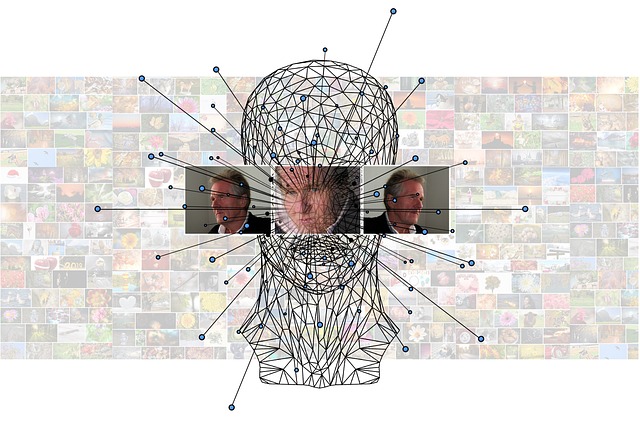
Individual Machine Learning Drives Autonomous Robotics in Business Automation
Automation has been a cornerstone of modern industry for decades, yet the next wave of productivity hinges on a more nuanced form of intelligence: individual machine learning. Unlike conventional batch models that treat all data uniformly, individual machine learning tailors learning processes to each robot’s unique operating context. This fine‑grained adaptation enables autonomous systems to evolve in real time, refining their decision‑making with the precision required for complex business environments.
Robotics as the Physical Layer of Automation
Robots occupy the tangible interface between software and the physical world. From assembly lines to warehouse aisles, they execute repetitive motions with speed and consistency that far exceed human capability. Yet the same physical constraints that grant them efficiency—weight limits, joint ranges, sensor noise—also introduce variability. Autonomous performance, therefore, depends on a robot’s ability to sense its environment, interpret data, and respond without human oversight. This is where individual machine learning becomes indispensable.
Artificial Intelligence: Bridging Perception and Action
Artificial intelligence provides the cognitive framework that allows robots to process sensory input and translate it into actionable commands. Vision systems can identify objects, lidar sensors map surroundings, and tactile sensors gauge force. Each data stream feeds into a decision network that must weigh options, anticipate failures, and adjust trajectories. When AI operates on a collective basis, it often relies on generalized models that may miss the subtlety of a single machine’s idiosyncrasies. Individual machine learning addresses this gap by focusing on per‑unit learning, thereby preserving contextual fidelity.
From General Models to Personalization
Traditional machine learning pipelines train on aggregated datasets, assuming homogeneity across devices. In reality, even nominally identical robots can exhibit diverse behaviors due to manufacturing tolerances, aging components, or localized wear. By contrast, individual machine learning treats each robot as a distinct learner. It continuously ingests performance metrics—such as cycle time, error rates, or energy consumption—and updates a localized model that captures that specific unit’s strengths and weaknesses. The result is a self‑optimizing system that can, for instance, compensate for a slightly misaligned gripper without external recalibration.
Manufacturing: Precision and Consistency
In high‑volume production, the margin for error is minimal. Individual machine learning can detect subtle deviations in a robot’s joint angles or sensor readings and adjust control parameters on the fly. A robotic arm that experiences a gradual drift in its end‑effector position can receive corrective feedback that aligns its future movements with design tolerances. This leads to reduced scrap rates, extended equipment lifespan, and higher throughput—all while keeping the workforce free from repetitive tasks. Moreover, because each unit adapts independently, factories can maintain diverse robot fleets without extensive re‑programming.
Logistics: Dynamic Routing and Handling
Warehouse automation relies on fleets of autonomous mobile robots (AMRs) that navigate complex layouts, avoid obstacles, and transport goods. Individual machine learning empowers each AMR to learn the unique friction characteristics of its wheels, the battery consumption profile at different speeds, or the optimal path through congested aisles. By personalizing routing decisions, the fleet can reduce travel time, balance battery usage, and lower the risk of collisions. The cumulative effect is a more resilient logistic network that can quickly adapt to new layouts or unexpected disruptions.
Customer Service: Human‑Robot Collaboration
Robots are increasingly deployed in customer‑facing roles—greeting visitors, dispensing products, or providing information. Individual machine learning enables these robots to fine‑tune their interactions based on user feedback and contextual cues. For instance, a retail robot that observes a higher-than‑average number of returns may adjust its product placement suggestions. Similarly, a service robot in a hotel can learn to adjust greeting tone according to the guest’s language proficiency. These subtle adaptations improve user satisfaction and demonstrate the brand’s commitment to personalized service.
Ethical Considerations in Autonomous Learning
With great power comes the responsibility to ensure that autonomous systems behave safely and fairly. Individual machine learning introduces a proliferation of autonomous models, each evolving independently. It is essential to embed safety constraints within every learning loop to prevent erratic behavior. Furthermore, transparency in decision‑making processes becomes more complex when models diverge across units. Industries must therefore adopt robust governance frameworks that monitor model drift, audit decisions, and enforce compliance with regulatory standards.
Scaling Challenges and Infrastructure Needs
Deploying individual machine learning at scale demands a robust data pipeline that can collect, preprocess, and feed sensor streams from hundreds or thousands of robots. Edge computing becomes critical, as on‑board processors handle real‑time inference to avoid latency penalties. Cloud orchestration, meanwhile, aggregates performance metrics for broader analytics and coordinated updates. Organizations must invest in secure, low‑latency networks and scalable machine‑learning platforms that support continuous deployment while maintaining fault tolerance.
Maintenance and Lifecycle Management
As each robot’s model evolves, maintaining consistency across the fleet requires diligent version control and rollback mechanisms. When a new learning update improves efficiency for one unit but inadvertently degrades performance in another, quick detection and remediation are vital. Lifecycle management tools that track model provenance, performance thresholds, and compliance status help maintain operational reliability. Ultimately, a proactive maintenance strategy reduces downtime and preserves return on investment.
Future Trends: Hybrid Learning and Edge‑AI Fusion
The next frontier combines individual machine learning with hybrid approaches that blend on‑board inference and cloud‑based analytics. Edge‑AI will handle high‑frequency control tasks, while the cloud aggregates cross‑robot insights to inform global strategy. Reinforcement learning, integrated with safety‑enforced policies, will enable robots to discover optimal behaviors while respecting operational constraints. Meanwhile, federated learning frameworks will allow robots to share anonymized experience data, accelerating collective learning without compromising privacy.
Impact on Workforce Dynamics
Autonomous robots empowered by individual machine learning are not merely replacements for human labor; they re‑define roles. Workers shift from manual operations to supervisory and analytical tasks, overseeing robot performance, interpreting learning outcomes, and fine‑tuning policies. This transition necessitates new skill sets—data science, AI ethics, and systems engineering—leading to a more knowledge‑centric workforce. Businesses that embrace this shift can achieve higher operational excellence while fostering employee engagement through continuous learning.
Conclusion: A New Paradigm for Business Automation
Individual machine learning transforms autonomous robotics from static, rule‑based machines into living systems that continuously adapt to their operational realities. By granting each robot a unique learning pathway, businesses unlock unprecedented levels of efficiency, resilience, and personalization across manufacturing, logistics, and customer service. While challenges in safety, scalability, and ethics remain, the ongoing convergence of edge computing, cloud orchestration, and advanced learning algorithms promises a future where autonomous robots seamlessly integrate into every facet of enterprise operations. As this technology matures, organizations that invest in individual machine learning today will secure a competitive advantage that resonates across the entire value chain.



